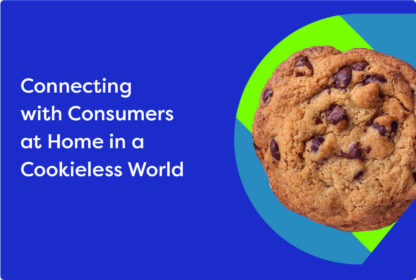As more and more of our lives have moved online in recent year, digital fatigue has set in. Exhausted with binging old TV shows, endless Zoom meetings, and Facebook live weddings, people are looking for ways to build connections that don’t involve staring at a screen. Receiving a piece of physical mail offers the kind of tangible, real-life connection that people are craving. And, by avoiding overcrowded web pages and clogged email inboxes, brands can stand out and drive real results by engaging people at home with direct mail.
But is sending physical marketing mail still a relevant tactics in 2022? Short answer: Yes.
And while PebblePost operates in a different channel (programmatic direct mail, or PDM), there are decades of data available from what you might consider the forefather of PDM — and every other data-driven marketing channel, for that matter: traditional direct mail. These statistics prove how effective engaging people at home can still be.
We’ve compiled a few of our recent favorites for you to enjoy:
- The direct mail advertising market is projected to grow from $71.57 billion in 2021 to $72.67 billion in 2022. (Direct Mail Advertising Global Market Report 2022)
- The average return on investment for this channel is $4.09 for every $1.27 spent. (Global News Wire)
- The average response rate is between 2.7% and 4.4%, compared to email’s 0.6% response rate. (Newswires)
- 73% of American consumers prefer being contacted by brands via mail because they can read it at their own convenience. (Small Biz Genius)
- More than 40% of direct mail recipients read or at least scan the mail they get. (Small Biz Genius)
- 84% of the Gen Z have received a direct mail piece with a QR code to interact with a brand online (by watching a video, going to a landing page with sales copy, or to order by phone/action device). Nearly 40% of these campaigns used direct mail and generated a profitable ROI. (CDMG Inc.)
- Nearly 90% of Millennials love receiving mail. This fits with their affinity for physical media — like vinyl records. The study also revealed that 57% of Millennial respondents acted on these offers. (USPS).
- Two-thirds of Gen X consumers say they have a positive impression of companies that send out relevant marketing mail. (USPS)
- While overall mail rates declined, total direct mail volume increased by 28% from 2020 to 2021. (Sequel Direct Mail Trends Report: Q4 2021)
- Direct mail volume has increased in the U.S., up from 67 million in 2020 to 70 million in 2021, an increase of 4.7%. (Statista)
- Postcards have increased in popularity, with envelope packages dropping 15% in the last year. (Whoismailinghwhat.com, “25 Direct Mail Trends for 2021”)
- There was a 49% increase in sales and 125% in increase in customer inquiries who received both email and catalogs. (Harvard Business Review)
- A survey of more than 500 marketers found almost two-thirds see “good” (59%) ROI from these campaigns. (Marketing Charts)
- More than 70% of Gen X consumers feel mail is more personal than online digital communications and are more likely to read promotional mail than emails. (USPS)
- One-third of consumers report feeling overwhelmed by tech during COVID-19. Parents and adults working from home report feeling overwhelmed at even higher rates. This fact highlights the fact that people are reverting to preferring hand-held marketing communications. (Deloitte Insights)
Connect to Consumers at Home in 2022 With Programmatic Direct Mail
Engaging people at home with physical mail is more important than ever, and while Traditional Direct Mail clearly has a lot of advantages, adding Programmatic Direct Mail to the mix gives you even more options for driving performance at every stage of the customer lifecycle.

Want to learn more about how you can make Programmatic Direct Mail a part of your omnichannel marketing strategy? Check out our Acquisition and Retention solutions, or contact us directly via our Contact Us page.



